1855-1869 Joseph Saxon, T Abrahams, Samuel Arnold, William Mizen, Henry Rodbourn, W Jefferies, E Wilburn, D F Midgley, J Zachary, John Drislane
Joseph Saxon, born in Oldham, Lancashire in 1816 in humble circumstances, spent his early working life down the coal mines near his home town. However, in 1841 he embarked on a career speculating on the Turf and became incredibly successful. So much so that he later formed a partnership with James Barber and the pair enjoyed an extraordinary run of success. Although by 1848 he had not registered racing colours, he did have horses running in his name, notably Columbus who was entered to run in the Leamington Cup at Warwick, although in the event Mr Saxon paid the forfeit and withdrew him. In 1850 he owned a horse named Chantrey, trained at Newton-le-Willows by Hopward, which ran 10 times during the season, but did not win any of its races. He also introduced a horse named The Black Doctor, a great favourite of his, which ran 8 times without success. The next year he owned two horses which contested races which were included in the Racing Calendar. His sister to Clothworker was unplaced at Wolverhampton, while his best horses at this stage, The Black Doctor, ran a further 8 times without winning. Whilst it is difficult to know how he made his fortune from racing his own horses, given that they were not winning, he was appointed to carry out commissions for very wealthy owners, and would have taken his cut from those wins. One in particular was very rewarding for him when, in 1851 Sir Joseph Hawley used Saxon to carry out large betting transactions on his behalf on Teddington to win the 1851 Epsom Derby. Teddington (SR 2046) was owned by Sir Joseph Hawley, trained by Alec Taylor and ridden by Job Marson, and was made the 3/1 fav on the back of huge bets, but landed them by an easy 2 lengths for his Kentish owner. On settling day, the Monday following the Derby, it was reported that the largest amount ever seen was passed to Hawley by Saxon in Arlington Street, London. By 1852 Saxon's colours of Green and Gold with Yellow cap appeared in the Racing Calendar for the first time, although in that year The Black Doctor ran 16 times, including Her Majesty's 100 Guineas Plate at Northampton, without success.
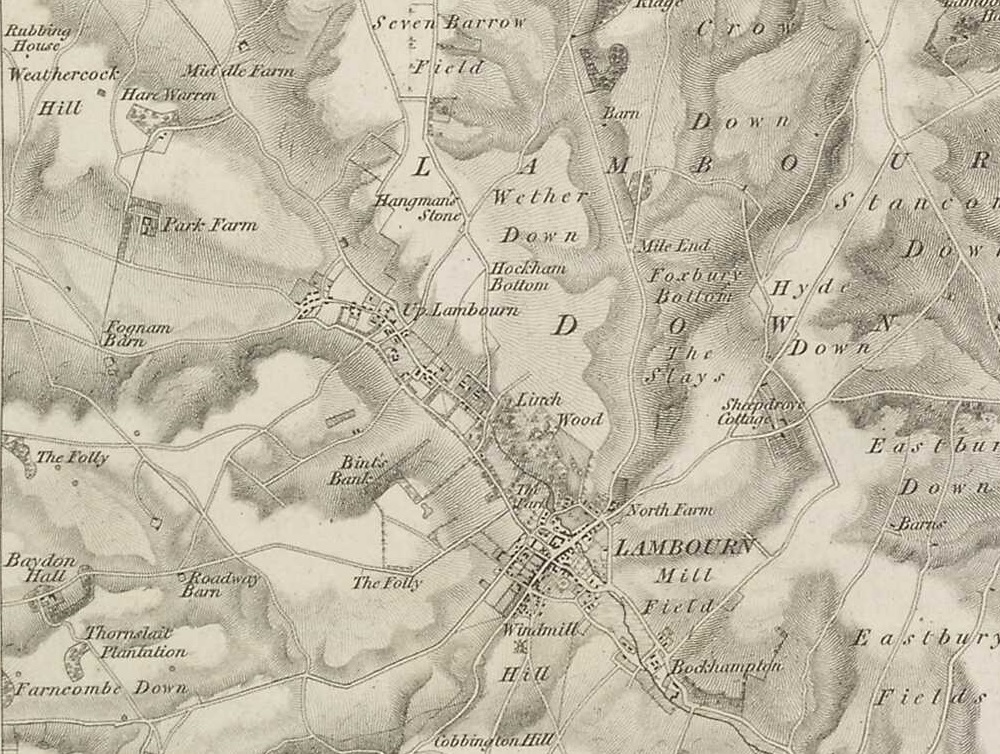
The year 1853 was an important milestone for Joseph Saxon, for such was his wealth at that stage that he was able to send out a string of horses to contest prominent races in the Calendar at some of the best racecourses in the country, and he almost certainly had the notion of building his magnificent house and stables in Lambourn towards the end of the financially successful year, which he was to name Saxon House, although it took a while to complete, so he remained with Hopward, his Newton-le-Willows based trainer. His season began at Nottingham when Caurire ran in the Nottingham Free Hurdle in March, although he was unplaced. Later in that month Sir Robert ran in the Willoughby Handicap at Warwick and Leamington, and also contested the Free Handicap Hurdle a couple of days later at the same venue.
1853 Lincoln Spring Handicap at Lincoln CAURIRE (8/1) owned by Joseph Saxon, trained by Hopward and ridden by Clements
1853 Croxton Park Handicap Cup CAURIRE (9/4) owned by Joseph Saxon, trained by Hopward and ridden by Mr Elwes
1853 Newmarket Handicap over the Cesarewitch Course CAURIRE (2/1) owned by Joseph Saxon, trained by Hopward and ridden by Clements
1853 Manor Plate at Epsom CALOT (4/1) owned by Joseph Saxon, trained by Hopward and ridden by Clements
1853 Golborne Stakes at Newton-le-Willows BARREL (6/4 fav) owned by Joseph Saxon, trained by Hopward and ridden by Abrahams
1853 St Helens Purse at Newton BARREL (evens fav) owned by Joseph Saxon, trained by Hopward and ridden by Clements
1853 East Riding Handicap at Beverley, Hull and east Riding SIR ROBERT (6/4 fav) owned by Joseph Saxon, trained by Hopward and ridden by Clements
1853 Mersey Stakes at Aintree BARREL (4/7 fav) owned by Joseph Saxon, trained by Hopward and ridden by John Osborne
1853 Stanley Stakes at Aintree BARREL (4/7 fav) owned by Joseph Saxon, trained by Hopward and ridden by John Osborne
1853 Castle Handicap at Nottingham CALOT (5/2 fav) owned by Joseph Saxon, trained by Hopward and ridden by Clements
1853 Chesterfield Handicap at Nottingham CALOT (5/4 fav) owned by Joseph Saxon, trained by Hopward and ridden by Clements
1853 Gimcrack Stakes at York BARREL (5/2) owned by Joseph Saxon, trained by Hopward and ridden by Whitehouse
1853 Town Stakes at Marlborough ANTONIA owned by Joseph Saxon, trained by Hopward and ridden by Forster
1853 Aintree Plate CALOT (6/1) owned by Joseph Saxon, trained by Hopward and ridden by Clements
1854 Great Warwickshire Handicap at Warwick and Leamington CLEVELAND (3/1 jt fav) owned by Joseph Saxon, trained by Hopward and ridden by Wells
1854 Lancaster Cup at Lancaster CLEVELAND (5/1) owned by Joseph Saxon, trained by T Abrahams and ridden by Clements
1860 New Stakes (Norfolk Stakes) at Royal Ascot BROWN DUCHESS (3/1 fav) owned by Joseph Saxon, trained by Henry James Rodbourn and ridden by Luke Snowden
1861 Epsom Oaks BROWN DUCHESS (SR 1964) 100/7 owned by Joseph Saxon, trained by W Jeffries and ridden by Luke Snowden.
1863 Ascot Stakes STANTON (100/8) owned by Joseph Saxon, trained by E Wilburn and ridden by Midgley
Edwin Parr, born in Caversham in 1813, was baptised on 14th January 1813, and became a stockman and racehorse trainer to some of the most prominent racehorse owners of their generation, including Lord St Vincent and George Osbaldeston, was a controversial character. There is no doubt that he possessed incredible training skills, but his money management and failure to pay simple bills meant that he accepted insolvency, was in court all too often, and suffered bankruptcy in the mid-1860s. He was certainly training in Lambourn by 1846, having built Parrs House and stables in that year, although by that stage of his career he was not winning high-profile races. Yet he was courting the wrong publicity. In 1851 he wrote to The Era complaining of a boy jockey he had used named Rickards, who had not carried out his orders as requested and had failed to win a race at Goodwood. In the newspaper he advised other trainers not to use Rickards in the future, potentially ruining the boys riding career. The Goodwood Stewards met and decided that Edwin Parr was unjustified in writing the comments, and that other trainers should guard against staining the characters of other apprentices. Parr had to write a letter of apology in The Era, acknowledging that it was wrong for him to publicly criticize a boy who was not 'bound to him.' In his early training years in Lambourn he was in charge of a number of horses owned by the renowned sportsman and racing character, George Osbaldeston, who was still riding in public aboard some of the Parr trained horses in 1855 when George was aged 69. Four particular horses of note owned by Osbaldeston in 1852 were Sylphine, Provost Marshall, John of Berwick and Mountain Deer, the first two of which had entries in the 1852 St Leger, although they did not subsequently take up their entries in a race won by Stockwell (SR 2063). At a meeting at Stockbridge, organized by the Bibury Club, John of Berwick, owned by Parr, won the Bibury Stakes and Free Handicap on the same day, the last of which was ridden by George Osbaldeston in his green silks and white cap at the age of 66. Mountain Deer won the Cheshire Stakes at Chester, the Claret Stakes at Newmarket, and one of Her Majesty's Plates for 100 Guineas at Lancaster. Despite not running in the St Leger, Sylphine, who was runner-up in the Woodcote Stakes at Epsom behind Orestes, won the Lavant Stakes at Goodwood and both the Mersey Stakes and Great Lancashire Produce Stakes at Aintree. Parr trained for wealthy owners, but also trained many of his own horses, notably Sanita who won the 1852 Chester Handicap and Claret Stakes at Brighton. Throughout his career Parr was plagued by Court appearances; in 1852 the principal action against him was from a past employee, Tubbs, who acted as head stable-keeper, horse keeper and groom at Parr's Lambourn stables, but was not paid for 13 months and, in June 1852, had to take Parr to Court. Parr had taken Tubbs with him to Chester races where they had enjoyed some success, so he offered Tubbs employment. When Parr went to Ascot races Tubbs took charge of the stable for a prolonged period and engaged his nephew to ride out. A dispute arose between Parr and the boy about his work and he was fired, which caused Parr and Tubbs to argue and, subsequently led to the dismissal of Tubbs, who was denied the pay he was due for 13 months work. In the end the Court believed Tubbs and found against Parr.
There is little doubt that Edwin Parr cherished his time in Lambourn, and he was already planning his next development, Stork House, for in 1853 he owned a brown foal by Gabbler out of Mystery which he named Stork, and in 1854 a chestnut foal by Loup Garou out of a Pantaloon mare which he named Lambourn.
May 1854-January 1855 Joseph Saxon, T Abrahams
Joseph Saxon had enjoyed a highly successful 1853 when his horses were trained by Mr Hopward of Newton-le-Willows, and had used his new-found wealth to build Saxon House and stables in Lambourn. In May 1854 the premises were ready for occupation and he moved his entire string from Lancashire to Berkshire, appointing his jockey T Abrahams as his trainer, although Abrahams continued to ride in selected races. Abrahams also acted as trainer to James Barber, based at neighbouring Seven Barrows. One of the horses which Saxon brough south with him was Cleveland, who had won the Great Warwickshire Handicap in March 1854, and Abrahams sent him north again to contest the Lancaster Cup which he won at 5/1. Abrahams, a new trainer, faced a huge task in getting to know the horses in two stables, but showed he was prepared to aim high by entering 4 horses in the Cesarewitch; 3-y-o Domino allocated 7st 5lbs, 4-y-o Cobnut with 7st 4lbs, 6-y-o The Black Doctor allocated 6st 12lbs, and 3-y-o Barrel with 5st 7lbs, two of which were Saxon's and the other two were Barber's. In the event Barber's Domino (50/1) and Cobnut (8/1) were unplaced behind Mr Greville's Muscovite (3/1 fav), with Saxon's horses not taking up their entries. At the turn of the year Abrahams transferred to Lewes and was replaced by Samual Arnold.
February 1855-1856 Joseph Saxon, Samuel Arnold
Samuel Arnold, born in 1807, was appointed trainer to the duo Joseph Saxon and James Barber, at Saxon House and Seven Barrows respectively in February 1855 when T Abrahams moved to Lewes, Sussex. The pair, who had experienced a difficult 1854 season, disposed of a large proportion of their stock, although they did hold on to Cobnut and Domino, even though Cobnut did not run throughout the entire season, and added newer stock which they hoped would be more productive. Saxon's stable had a string of 9 which contested at least one race during the season, whilst Barber had just 4, although Pretty Boy swapped between the 2 in terms of ownership. By any measure the season was, once again disappointing, their horses racing 75 times, but only 3 horses, Mary, Domino and Hazlenut managed wins, and Evangeline did not win whilst trained by Sam Arnold, but did win 3 times after she was sold. Joseph Saxon did win the prestigious Aintree Plate at Liverpool with Mary when partnered by champion jockey George Fordham.
In contrast to 1855, the next year was a spectacularly successful year for Saxon and Barber, with Pretty Boy being Barber's best horse, landing the Liverpool Cup, Stamford Gold Cup, Marquis of Westminster Plate at Chester, Her Majesty's 100 Guineas Plate at Goodwood and the Goodwood Stakes at the Glorious Goodwood meeting. Saxon's best horse was Mary, winning the Sefton Handicap at each end of the season, the Liverpool Spring Cup and the Grand Stand Cup at Chester.
1855 Worcestershire Stakes DOMINO (6/1) owned by James Barber, trained by Sam Arnold and ridden by J Forster
1855 Sherwood Handicap at Nottingham HAZLENUT (3/1) owned by Joseph Saxon, trained by Sam Arnold and ridden by Captain Little
1855 Warwick Town Plate MARY (5/1) owned by Joseph Saxon, trained by Sam Arnold and ridden by George Fordham
1855 Wynnstay Handicap at Wrexham MARY (3/1) owned by Joseph Saxon, trained by Sam Arnold and ridden by J Forster
1855 Aintree Plate at Liverpool MARY (3/1) owned by Joseph Saxon, trained by Sam Arnold and ridden by George Fordham
1855 Shrewsbury Handicap Plate MARY (7/1) owned by Joseph Saxon, trained by Sam Arnold and ridden by J Forster
1856 Liverpool Spring Cup MARY (2/5 fav) owned by Joseph Saxon, trained by Sam Arnold and ridden by Quinton
1856 Sefton Handicap at Aintree MARY (4/6 fav) owned by Joseph Saxon, trained by Sam Arnold and ridden by George Fordham
1856 Innkeepers Plate at Nottingham SIR ROWLAND TRENCHARD (4/1) owned by James Barber, trained by Sam Arnold and ridden by J Forster
1856 Warwick Handicap SIR ROWLAND TRENCHARD (7/2) owned by James Barber, trained by Sam Arnold and ridden by J Forster
1856 Trial Stakes at Thirsk MARY (Evens fav) owned by Joseph Saxon, trained by Sam Arnold and ridden by J Forster
1856 Marquis of Westminster Plate at Chester PRETTY BOY (5/1) owned by James Barber, trained by Sam Arnold and ridden by George Fordham
1856 Grand Stand Cup at Chester MARY (2/1 jt fav) owned by Joseph Saxon, trained by Sam Arnold and ridden by J Forster
1856 Salford Borough Cup at Manchester PRETTY BOY (6/4 fav) owned by James Barber, trained by Sam Arnold and ridden by George Fordham
1856 Derby Handicap Plate QUEEN BESS (10/1) owned by Joseph Saxon, trained by Sam Arnold and ridden by Rayner
1856 Stamford Gold Cup PRETTY BOY (5/6 fav) owned by James Barber, trained by Sam Arnold and ridden by Rayner
1856 Nottinghamshire Handicap PRETTY BOY (6/4 fav) owned by James Barber, trained by Sam Arnold and ridden by George Fordham
1856 Liverpool Cup at Aintree PRETTY BOY (6/1) owned by James Barber, trained by Sam Arnold and ridden by George Fordham
1856 Lewes Stakes at Lewes PRETTY BOY (1/2 fav) owned by James Barber, trained by Sam Arnold and ridden by Quinton
1856 Sefton Handicap at Aintree MARY (10/1) owned by Joseph Saxon, trained by Sam Arnold and ridden by Dales
1856 Goodwood Stakes at Glorious Goodwood, PRETTY BOY (20/1) owned by James Barber, trained by Sam Arnold and ridden by Aldcroft
1856 Her Majesty's 100 Guineas Plate at Goodwood PRETTY BOY (1/4 fav) owned by James Barber, trained by Sam Arnold and ridden by Quinton
1855-1858 John Prince, James Merry (Parrs House)
John Prince, born in 1829, was from a family steeped in racing history. His grandfather, Richard Prince, was born in Ireland but made a name for himself as a trainer in England, winning 5 Epsom Derby's, 1795 Spread Eagle (SR 1953), 1796 Didelot (SR 2015), 1799 Archduke (SR 1996), 1806 Paris (SR 1937) and 1819 Tiresias (SR 1984). His uncle, Richard Prince junior, won the 1835 1000 Guineas with Preserve (SR 1986) and the 1821 Epsom Oaks with Augusta (SR 1979). John was a capable flat race jockey for a decade between the mid-1840s and mid-1850s, but in summer 1855 James Merry installed him as a trainer at East Ilsley. By the end of the year Merry fell out with his trainer William Day and brought Prince to Parrs House Stables in Upper Lambourn. In 1857 Prince trained The Lord of Lorn 4/6 fav to win the Molecomb Stakes at Goodwood for James Merry. The year 1858 was an excellent year for the Prince/Merry partnership, landing the Coronation Stakes with Sunbeam, the Goodwood Cup with Saunterer, the Gimcrack Stakes with Rainbow, and rounding off the season with a win in the St Leger with Sunbeam. The pair fell out the next year and Prince transferred to Stork House.
1857 Molecomb Stakes at Goodwood THE LORD OF LORN 4/6 fav owned by James Merry, trained by John Prince and ridden by Aldcroft
1858 Coronation Stakes at Royal Ascot SUNBEAM 4/7 fav owned by James Merry, trained by John Prince and ridden by Chillman
1858 Goodwood Cup at Goodwood SAUNTERER 7/1 owned by James Merry, trained by John Prince and ridden by John Osborne
1858 Gimcrack Stakes at York RAINBOW 6/5 fav owned by James Merry, trained by John Prince and ridden by Wells
1858 St Leger at Doncaster SUNBEAM (SR 1825) 15/1 owned by James Merry, trained by John Prince and ridden by Luke Snowden
1857-January 1859 Joseh Saxon, William Mizen
In early 1857, after Samuel Arnold moved on, Saxon and Barber appointed William Mizen, then aged just 20, to train for them at their respective stables of Saxon House and Seven Barrows. The pair jointly owned a Stud in Lancaster, and horses frequently changed ownership between the two, Miss Harkaway having won 3 times for James Barber in the first 5 months of the 1857 season, but in September she ran in Saxon's colours of green and gold with yellow cap to win the Windham Handicap at Warwick's Grand Military meeting before reverting to Barber's colours of brown with white cap when winning the Liverpool Handicap Hurdle at Aintree in November. Mizen continued to train for the pair until his untimely death on Friday 21st January 1859 aged just 22 and is buried in Lambourn Parish churchyard.
1857 Corinthian Stakes at Warwick MISS HARKAWAY (1/3 fav) owned by James Barber, trained by William Mizen and ridden by Mr Edwards
1857 Staffordshire Stakes at Lichfield MISS HARKAWAY (7/4) owned by James Barber, trained by William Mizen and ridden by Arnott
1857 Rockingham Plate at Rochester and Chatham MISS HARKAWAY (2/5 fav) owned by James Barber, trained by William Mizen and ridden by Dales
September 1857 Windham Handicap at Warwick's Grand Military meeting MISS HARKAWAY (4/1) owned by Joseph Saxon, trained by William Mizen and ridden by Pritchard
November 1857 Liverpool Handicap Hurdle at Aintree MISS HARKAWAY (7/4 fav) owned by James Barber, trained by William Mizen and ridden by Green
1857 Bentinck Benevolent Fund Handicap at Worcester PRETTY BOY (2/5 fav) owned by James Barber, trained by William Mizen and ridden by Dales
1857 Welter Handicap at Warwick PRINCE OF ORANGE (2/5 fav) owned by James Barber, trained by William Mizen and ridden by Captain Little
1857 Vale of Lune Handicap at Lancaster PRINCE OF ORANGE (1/2 fav) owned by James Barber, trained by William Mizen and ridden by Bullock
1857 Sherwood Handicap at Nottingham PRINCE OF ORANGE (2/1) owned by James Barber, trained by William Mizen and ridden by Captain Little
1857 Fifth Brighton Biennial Stakes COMMOTION (11/10 fav) owned by James Barber, trained by William Mizen and ridden by Aldrcroft
1857 Leamington Stakes at Warwick COMMOTION (4/1) owned by James Barber, trained by William Mizen and ridden by Dales
February 1859-1860 Joseph Saxon, Henry James Rodbourn
Henry James Rodbourn arrived in Lambourn in the mid-1850s and rode for Joseph Saxon at his Saxon House Stables. In January 1859 trainer William Mizen died suddenly and Henry Rodbourn took charge of both Joseph Saxon's Saxon House string and James Barber's Seven Barrows string. Quite often the two owners changed the ownership of their horses, and jointly owned Ashton Paddock Stud in Lancaster, so it seemed logical to just employ the one main trainer. In 1859 Saxon had a particularly good mare named Princess Royal which Rodbourn trained to win a Newmarket Sweepstake, followed by the Trademen's Plate at Derby. The next year Rodbourn trained Brown Duchess to win the New Stakes at Royal Ascot for Joseph Saxon, and a year later that filly gained a Classic victory in the Epsom Oaks at 100/7. By 1861 the relationship between Saxon and Barber became strained, particularly over one horse, Ben Webster, which became owned solely by James Barber and notched wins in the Queens Plate at Newmarket, the Cheshire Welter Cup, two Her Majesty's Plates at the Curragh just 2 days apart, and the prestigious Tradesmen's Plate (later the Chester Cup) at Chester. At this point there became a clear divide between Saxon House and Seven Barrows, and this was apparent most noticeably when Barber and Saxon ran their horses against each other in the same races on multiple occasions, something which they had avoided doing in previous years..
1859 Newmarket Sweepstake PRINCESS ROYAL (6/1) owned by Joseph Saxon, trained by Henry Rodbourn and ridden by Luke Snowden
1959 Hawkstone Cup at Shrewsbury PRINCE OF ORANGE (2/1) owned by James Barber, trained by Henry Rodbourn and ridden by James Snowden
1859 Port Meadow Stakes at Oxford QUEEN BESS (5/2) owned by Joseph Saxon, trained by Henry Rodbourn and ridden by Comery
1859 Borough Members Plate at Stamford KING WILLIAM (10/1) owned by James Barber, trained by Henry Rodbourn and ridden by James Grimshaw
1859 Aristocratic Plate at Lichfield KING WILLIAM (6/4 fav) owned by James Barber, trained by Henry Rodbourn and ridden by Mr Edwards
1859 Croxteth Cup at Aintree KING WILLIAM (4/7 fav) owned by James Barber, trained by Henry Rodbourn and ridden by Mr Edwards
1859 Tradesmen's Plate at Derby PRINCESS ROYAL (7/2) owned by Joseph Saxon, trained by Henry Rodbourn and ridden by Luke Snowden
1860 New Stakes (Norfolk Stakes) at Royal Ascot BROWN DUCHESS (3/1 fav) owned by Joseph Saxon, trained by Henry Rodbourn and ridden by Luke Snowden
1861 Epsom Oaks BROWN DUCHESS (SR 1964) 100/7 owned by Joseph Saxon, trained by W Jeffries and ridden by Luke Snowden.
1861 Queens Plate at Newmarket BEN WEBSTER (3/1) owned by James Barber, trained by W Jeffries and ridden by Luke Snowden
1861 Tradesmen's Plate at Chester BEN WEBSTER (4/1) owned by James Barber, trained by W Jeffries and ridden by Luke Snowden
1861 Cheshire Welter Cup at Chester BEN WEBSTER (2/5 fav) owned by James Barber, trained by W Jeffries and ridden by Mr Edwards
1861 Her Majesty's Plate at The Curragh BEN WEBSTER owned by James Barber, trained by W Jeffries and ridden by Luke Snowden
1861 Her Majesty's Plate 2 days later at The Curragh BEN WEBSTER owned by James Barber, trained by W Jeffries and ridden by Luke Snowden
1861 William Jeffries
Joseph Saxon had enjoyed one of his most successful years with James Barber in 1860, mutually engaging the trainer Henry James Rodbourn, and celebrating a Royal Ascot victory with Brown Duchess in the New Stakes, which later became the Norfolk Stakes. However, 1861 proved to be a pivotal year when the relationship with James Barber ended, the Lancaster stud was no longer jointly owned, and Saxon appointed William Jeffries as his trainer. The victory of Ben Webster in the Tradesmen's Cup at Chester appeared to give James Barber bragging rights until Saxon regained them by winning the Epsom Oaks with Brown Duchess (SR 1964) at 100/7 when ridden by Lambourn based jockey Luke Snowden. In the end Saxon would be able to count the year as one of his best ever, winning many races with 7 different horses, although on no occasion did a Barber horse and Saxon horse battle out a finish to a race.
1861 Renewal Stakes at Newmarket BIG BEN (2/5 fav) owned by Joseph Saxon, trained by W Jeffries and ridden by Luke Snowden
1861 Doncaster Spring Handicap THE MONK (4/1) owned by Joseph Saxon, trained by W Jeffries and ridden by Midgley
1861 Ascot Sweepstakes BIG BEN (4/5 fav) owned by Joseph Saxon, trained by W Jeffries and ridden by Luke Snowden
1861 Ascot Sweepstakes BROWN DUCHESS (2/5 fav) owned by Joseph Saxon, trained by W Jeffries and ridden by Luke Snowden
1861 Sefton Stakes at Aintree BROWN DUCHESS walked over
1861 Stanley Stakes at Aintree BROWN DUCHESS (5/6 fav) owned by Joseph Saxon, trained by W Jeffries and ridden by Luke Snowden
1861 Warwick Handicap COUNT HORN (2/5 fav) owned by Joseph Saxon, trained by W Jeffries and ridden by Midgley
1861 Leicester Ladies Plate LITTLE DICK (6/4) owned by Joseph Saxon, trained by W Jeffries and ridden by Midgley
1861 Tyro Stakes at York MISS COUTTS (5/1) owned by Joseph Saxon, trained by W Jeffries and ridden by Midgley
1861 Grandstand Stakes at Nottingham MISS COUTTS (1/4 fav) owned by Joseph Saxon, trained by W Jeffries and ridden by Midgley
1861 Epsom Oaks BROWN DUCHESS (SR 1964) 100/7 owned by Joseph Saxon, trained by W Jeffries and ridden by Luke Snowden.
1861 Yorkshire Oaks at York BROWN DUCHESS (4/9 fav) owned by Joseph Saxon, trained by W Jeffries and ridden by Luke Snowden
1861 Park Hill Stakes at Doncaster BROWN DUCHESS (1/6 fav) owned by Joseph Saxon, trained by W Jeffries and ridden by Luke Snowden
1861 Doncaster Cup BROWN DUCHESS (5/1) owned by Joseph Saxon, trained by W Jeffries and ridden by Midgley, dead-heated with Derby winner Kettledrum (5/1), but declined to contest the run-off
1861 Grand Duke Michael Stakes at Newmarket BROWN DUCHESS (1/3 fav) owned by Joseph Saxon, trained by W Jeffries and ridden by Luke Snowden
1861 Queens Plate at Bedford BROWN DUCHESS (2/5 fav) owned by Joseph Saxon, trained by W Jeffries and ridden by Luke Snowden
1861 Newmarket October Handicap THE MONK (100/6) owned by Joseph Saxon, trained by W Jeffries and ridden by Midgley
1861 Kelso Border Handicap THE MONK (evens fav) owned by Joseph Saxon, trained by W Jeffries and ridden by Midgley
1861 Devon & Exeter Stakes PENALTY (2/1 fav) owned by Joseph Saxon, trained by W Jeffries and ridden by Midgley
1861 Newmarket Handicap PENALTY (5/1) owned by Joseph Saxon, trained by W Jeffries and ridden by Midgley
1862-December 1862 F Midgley
In 1862 W Jeffries departed to leave a gap for the appointment of F Midgley as Saxon's trainer. Free from his links with James Barber, there was a noticeable, and completely logical, shift from running at Northern courses like Aintree, Newton, Manchester and York with the exception of The Monk running unplaced in the Great Ebor Stakes, to contesting races at racecourses more accessible to Lambourn, Ascot, Epsom, Abingdon, Newmarket, Reading, Hungerford, Oxford and Lewes. Whilst no high-profile races were won during the year, Saxon and Midgley did win the London Bridge Stakes at Epsom and Great Stud Stakes at Nottingham with Douche, and the Witham Handicap at Lincoln late in the season. When Midgley departed for the Curragh to take charge of Joseph Davies's horses at French House at the very end of 1862 it proved to be a turbulent next year for Saxon, who employed 3 different trainers in that year.
1862 London Bridge Stakes at Epsom DOUCHE (3/1 jt fav) owned by Joseph Saxon, trained by F Midgley and ridden by James Grimshaw
1862 Abingdon Free Handicap PARESSEUSE (7/4 fav) owned by Joseph Saxon, trained by F Midgley and ridden by Midgley
1862 Great Stud Stakes at Nottingham DOUCHE (5/2) owned by Joseph Saxon, trained by F Midgley and ridden by Midgley
1862 Priory Stakes at Lewes AMAZONIAN (10/1) owned by Joseph Saxon, trained by F Midgley and ridden by Midgley
1862 Nursery Plate at Reading COUNTESS (4/1) owned by Joseph Saxon, trained by F Midgley and ridden by James Grimshaw
1862 Handicap Plate at Nottingham BALLY EDMOND (7/4 fav) owned by Joseph Saxon, trained by F Midgley and ridden by Midgley
1862 Witham Handicap at Lincoln CHURCHMAN (3/1) owned by Joseph Saxon, trained by F Midgley and ridden by Midgley
December 1862-April 1863 J Zachary
When F Midgley departed in late 1862 J Zachary was appointed and a highly successful season was predicted. So much so that Joseph Saxon, who had 24 horses in training, placed a bet in January of £5000 to £100 that he would win the Epsom Derby. That optimism proved to be short-lived as he did not even field a runner in the race and, for some reason, Zachary left under a cloud in late April 1863 to be replaced by the Head Lad Edgar Wilburn. Zachary had previously trained for Mr Worthington until his death, and in January 1857 he was appointed trainer to Mrs George Osbaldeston at Alvediston, Wiltshire. He first moved to Lambourn in September 1861 when private trainer for Mr Snewing. At Saxon House Zachary sent out 17 different horses to contest over 30 races in 4 months, but only Stanton (6/4 fav) and Idle Girl (4/5 fav) won. Jerry lost a 2-horse race, Oaks winner Brown Duchess failed to win a Newmarket Handicap, and Sweet Willie was beaten in a 3-horse race at Cardiff when sent off at 1/2 fav.
April 1863 Durdans Plate at Epsom STANTON (6/4 fav) owned by Joseph Saxon, trained by J Zachary and ridden by Midgeley
April 1863 Stand Stakes at York IDLE GIRL (4/5 fav) owned by Joseph Saxon, trained by J Zachary and ridden by James Grimshaw
May 1863-June 1863 Edgar Wilburn
When Zachary suddenly left his training duties on 29th April 1863 there was little time to appoint a new permanent trainer, so Head Lad Edgar Wilburn took over on a temporary basis and was in charge for two months. Wilburn had previously been a jockey and then private trainer to Count Hugo Henckel in Germany, and once Wilburn was replaced by Clay, after two months in charge, he left for Belgium where he was appointed trainer and jockey to General Shirley. By any measure Wilburn's 2 months in charge was a success, for he had the foresight to enter 5 horses in races at Royal Ascot, winning the Ascot Stakes with Stanton, and then entered Stanton for the Northumberland Plate at Newcastle, where he was backed down to 4/1 second favourite but failed to live up to expectation, although the pair did win the Gold Cup Stakes at the same meeting with Littlecote. As well as Stanton's victory at Royal Ascot, Wilburn and Saxon ran Classic winner Brown Duchess in the Queen's Plate, The Abbot in the Triennial Stakes, known today as the Chesham, Langford contested the New Stakes, known today as the Norfolk Stakes, while The Monk ran in the Wokingham Handicap.
June 1863 Ascot Stakes STANTON (100/8) owned by Joseph Saxon, trained by Edgar Wilburn and ridden by Midgeley
June 1863 Gold Cup Stakes at Newcastle LITTLECOTE (5/2) owned by Joseph Saxon, trained by Edgar Wilburn and ridden by James Grimshaw
July 1863-December 1863 Thomas Clay
Having seen off 3 trainers within 6 months, Saxon appointed Thomas Clay as his next trainer despite the success of Edgar Wilburn. In 1856 Clay had moved to France, where he rode as a lightweight jump jockey, riding at 8st 4lbs for five years. He also trained in France for Mr Teddy Summer before becoming private trainer in October 1861 to M Caille. Soon afterwards, however, he was back in England advertising for another post. For 7 months in 1863 he trained for Joseph Saxon before joining Mr Bevill. Whilst at Saxon House Clay achieved early success by winning the Great Lancashire Produce Stakes at Aintree with Lady Mary and a minor Nottingham Nursery Handicap with Inverness, but could then only manage a further 4 wins in 5 months to the end of the year. The Monk was his best performing horse during that time, capturing the Lincoln Autumn Handicap and Newmarket October Handicap, while Water Kelpie won the Beaufort Stakes at Newmarket. At the end of the year Saxon decided to reappoint F Midgley, who remained in place for 2 years.
July 1863 Great Lancashire Produce Stakes at Aintree LADY MARY (7/1) owned by Joseph Saxon, trained by Thomas Clay and ridden by James Grimshaw
July 1863 Nottingham Nursery Plate INVERNESS (5/1) owned by Joseph Saxon, trained by Thomas Clay and ridden by James Grimshaw
October 1863 Lincolnshire Autumn Handicap THE MONK (3/1) owned by Joseph Saxon, trained by Thomas Clay and ridden by Midgley
October 1863 Beaufort Stakes at Newmarket WATER KELPIE (1/2 fav) owned by Joseph Saxon, trained by Thomas Clay and ridden by Midgley
October 1863 Newmarket October Handicap THE MONK (9/1) owned by Joseph Saxon, trained by Thomas Clay and ridden by James Grimshaw
November 1863 Hunters Plate at Aintree THE MONK (1/4 fav) owned by Joseph Saxon, trained by Thomas Clay and ridden by Mr G S Thompson
1864-1868 W Weatherall (Parrs House)
William Weatherall, born in 1803, assisted Hambleton trainer Robert Hesseltine prior to training on his own account at Delamere Forest between 1844 and 1848. He then moved to the famous Mostyn Stables at Holywell, on the doorstep of Holywell Racecourse where he was Clerk of the Course. By 1854 he had moved north to Middleham, training Lance to win the Portland Handicap at Doncaster for Mr Hind when ridden by Wilberforce. By 1864 Weatherall was on the move again, this time to Parrs House, Upper Lambourn which had stabling for 24 horses, but he could only get 8 horses in his first year, which reduced to 4 the following year. By 1868, with his string down to an unviable number, he moved to East Ilsley.
1856 Portland Handicap at Doncaster LANCE 11/1 owned by Mr Hind, trained by William Weatherall and ridden by Wilberforce.
January 1864-October 1865 F Midgley
Midgley had ridden for Saxon, trained for Saxon, departed from Saxon, but then made a return until October 1865 when John Drislane was appointed. During this period in charge Midgley struggled in 1864, but in 1865 the stable star was Idle Girl who won the Aintree Stakes and Mersey Cup at Liverpool, and captured the Prince of Wales Stakes at Newmarket. Saxon also won a couple of races on his own doorstep in Lambourn, winning the Trail Stakes with Miss Harriette, and the Craven Stakes with Bendigo.
1864 Great Warwickshire Handicap at Warwick SWEET WILLIE (4/1) owned by Joseph Saxon, trained by F Midgley and ridden by James Grimshaw
1864 Flying Dutchman Stakes at York THE MONK (100/15) owned by Joseph Saxon, trained by F Midgley and ridden by Midgley
1864 Nottingham Nursery Plate BONNIE LASS (2/1) owned by Joseph Saxon, trained by F Midgley and ridden by H Sharp
1864 Grand Stand Stakes at Nottingham INVERNESS (1/2 fav) owned by Joseph Saxon, trained by F Midgley and ridden by James Grimshaw
1864 Innkeepers Stakes at Derby ZARA (7/4 jt fav) owned by Joseph Saxon, trained by F Midgley and ridden by James Grimshaw
1865 Spring Flying Stakes at Aintree JANE SHORE (3/1 jt fav) owned by Joseph Saxon, trained by F Midgley and ridden by James Grimshaw
1865 Aintree Stakes at Liverpool IDLE GIRL (3/1 fav) owned by Joseph Saxon, trained by F Midgley and ridden by James Grimshaw
1865 Mersey Cup at Aintree IDLE GIRL (5/4 fav) owned by Joseph Saxon, trained by F Midgley and ridden by James Grimshaw
1865 Prince of Wales Stakes at Newmarket IDLE GIRL (5/2) owned by Joseph Saxon, trained by F Midgley and ridden by James Grimshaw
1865 Mostyn Stakes at Chester MISS HARRIETTE (5/1) owned by Joseph Saxon, trained by F Midgley and ridden by Clement
1865 Grand Stand Stakes at Nottingham BONNIE LASS (2/5 fav) owned by Joseph Saxon, trained by F Midgley and ridden by Clement
1865 Trial Stakes at Lambourn MISS HARRIETTE Walked-over
1865 Craven Handicap at Lambourn BENDIGO (2/1) owned by Joseph Saxon, trained by F Midgley and ridden by H Sharp
November 1865 -October 1867 John Drislane
John Drislane, born in 1826, enjoyed all country sports, especially hunting and coursing. In November 1865 he was appointed trainer of Joseph Saxon's horses at Saxon House Stables, training horses like Stilton, Beeswing, by Newminster out of The Sphynix, Monitress and Lord Craven, enjoying success with each of them, including the Princess of Wales Plate at Oxford with Beeswing. He also continued to enjoy coursing, especially at Richmond where he had many friends, and ones which he could call on in times of trouble to offer him alternative employment. The next year Saxon and Drislane's fortune turned, the pair sending out John Halifax, Monitress, General Sherman, Patrician and Honey 45 times, but winning only one race, a lowly Railway Stakes at Stockbridge with General Sherman. The relationship must have become strained, particularly when Saxon had to sell Monitress and Patrician, only for them to win 3 races between them after being sold. In autumn 1867 John Drislane was assaulted by Andrew Saxon, stable owner Joseph Saxon's son, who struck him about the head with a pitchfork and led Drislane to take Andrew to court. Andrew was found guilty of the crime and sentenced to two months imprisonment without hard labour. That situation caused a further break in the working relationship between Drislane and Saxon, with Drislane leaving Saxon House on 1st October 1867, taking up the post of Head Lad at Stork House, where Fred Bates trained, before transferring with Bates to Middleham, close to Richmond in 1873. In January 1868 Saxon faced a charge of non-payment of wages at Reading Petty Sessions after he failed to pay Drislane the £15 due in unpaid wages. Saxon lost the case and had to pay Drislane the £15 and costs to the court. Drislane went on to successfully carve out a training career of his own in Middleham, training 4 Great St Wilfrid winners at Ripon between 1883 and 1890, but he died on 7th February 1891 after accidentally being hit by a horse during a schooling trial.
1866 Racing Stakes at Warwick STILTON (100/15) owned by Joseph Saxon, trained by John Drislane and ridden by Clement
1866 Visitors Plate at Ascot MONITRESS (3/1 fav) owned by Joseph Saxon, trained by John Drislane and ridden by Murray
1866 Leamington Stakes at Warwick MONITRESS (100/8) owned by Joseph Saxon, trained by John Drislane and ridden by J Vinell
1866 Trial Stakes at Warwick BEESWING (3/1) owned by Joseph Saxon, trained by John Drislane and ridden by James Grimshaw
1866 Princess of Wales Plate at Oxford BEESWING (10/1) owned by Joseph Saxon, trained by John Drislane and ridden by J Vinell
1867 Railway Stakes at Stockbridge GENERAL SHERMAN (4/1) owned by Joseph Saxon, trained by John Drislane and ridden by H Clark
October 1867-1868 Joseph Saxon
John Drislane left on 1st October 1867, although he did not officially leave until a court case of non-payment of wages was settle in January 1868, Joseph Saxon was registered as the owner trainer throughout 1868. However, he did send some of his horses to be trained by John Barham Day, and others to Joseph Dawson, so maybe he was not fully confident of his own training ability. Winners were certainly hard to come by during his period in charge, so it probably came as a relief to appoint Chilman for the 1869 season.
1869 Chilman
After the explosive end to Saxon's association with John Drislane, including assault by his son Andrew, Drislane's departure in October, court appearance for non-payment of wages in January, and Drislane's eventual move to Middleham, Saxon eventually appointed Chilman in 1869. Chilman had spent several years riding abroad, returning to try his hand at training. It was clear that Saxon was reducing his string in readiness for him to move north where he took on ownership of the King's Head Inn in Oldham. On 12th June 1869 there was a sale of 27 of his yearlings, 15 of which found buyers to raise 1280 Guineas, with lots going to William Day, Joseph Dawson, Robert Sherwood, Matthew Dawson and John Barham Day. He still had ownership of Saxon House, although he was greatly troubled by his rogue son Andrew, and had to obtain a court order preventing Andrew from visiting Saxon House. In the end Andrew did visit, was taken to court which led to him being imprisoned by the actions of his own father.
Thomas Brown, a contemporary of legendary Newmarket trainers the Dawsons, Tom Jennings, the Bloss brothers and Gilbert, trained at Graham Place for a considerable time, but for a short period it is thought he was based at Saxon House Stables. During his most successful period in Newmarket he employed Fred Webb as his stable jockey and in 1869 they won the Cesarewitch with Cherie for principal owner Mr R C Naylor. In 1883 Kelly's Directory records Thomas Brown as the trainer in Graham House. Towards the end of his life Tom moved to Waterloo Lodge and died whilst on a visit to London on Thursday 3rd September 1896.
November 1870-February 1872 Robert Thomas
After the death of Joseph Saxon in October 1870 some of his horses remained in Saxon House Stables to be trained by Robert Thomas, including the 2-y-olds Merry Monk and Playfair. Some, including April Morn, left for the Devizes stable of George Clement. Robert Thomas continued to train at Saxon House until early 1872 when he sold all of his training equipment by auction in Newbury on 6th February 1872. Horses formally in his control went on to perform well in high class races; Playfair winning the 1872 Cambridgeshire when trained by William Saunders; Khedive winning the North Derby at Newcastle and running with credit in the 1872 St Leger behind Wenlock (SR 1881).
1871 William Planner (Parrs House)
William Planner, born in 1830, began his training career at Tilshead Lodge, Wiltshire in 1852. By 1864 he had transferred to Chantilly where he performed well for a number of years, boasting a string of 23 horses in 1869. When William decided to return to England in 1871 his brother Charles Planner replaced him. William took over at Parrs House, Upper Lambourn, where he remained for just one year before returning to France.
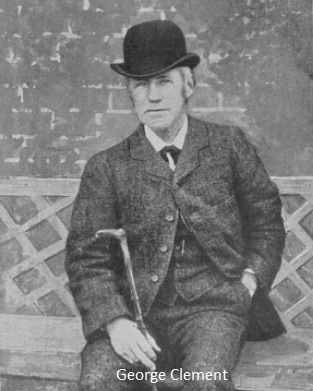
Arrived October 1872 George Clement 1884-1887 G Clement (Parrs House)
George Argyle Clement, born in Pimlico in 1829, began his working life as a butcher's apprentice, but then had a lucky break when spotted by Tom Parr and Joseph Saxon whilst riding horses on his rounds, and formed a close association with Saxon at Saxon House Stables. Indeed, in 1853 he steared Carurie to victory in the 1853 Lincoln for Saxon, the inaugural running of that race and Clement's first ride in public. In 1855 he achieved an Ascot success when partnering Mortimer (5/2 fav) to win the Ascot Stakes, and ended the year winning the Newmarket Handicap on Hercules. Four years later he won the Lincoln again with Bel Esperanza, whilst in 1863, he won the Queen's Vase aboard Adventurer (7/4 fav). George Clement began training in 1865 despite still riding, movng into Saxon House Stables in October 1872 having previously trained at Devizes, Wiltshire. One of his best early wins came in March 1875 when he saddled the first and second in the highly competitive Great International Handicap Hurdle at Croydon, winning with Industrious (100/8) ridden by W Daniels, and filling the runners up spot with Barton (6/1) ridden by Fred Lynham. Today it would be unthinkable for a horse to win the Cambridgeshire and the long distance Cesarewitch, but in 1876 that is a feat which Clement accomplished with Rosebery. He realized that the horse was capable of staying longer distances, but did not want to alert touts watching on the gallops to this fact, so instead he invited a stable lad to use Rosebery to ride to the post office with the stables post, and when the touts saw this they assumed the horse was useless. Clement returned to Upper Lambourn to train at Parrs House between 1884 and 1887. Clement fathered 3 sons who all became trainers, and retired in 1902. He enjoyed a long retirement, dying at Eastmarton Farm on 7th November 1917 aged 85.
1875 Great International Handicap Hurdle at Croydon INDUSTRIOUS (100/8) owned by Kemmy W Walker, trained by George Clement and ridden by W Daniels
1876 Cesarewitch at Newmarket ROSEBERY (7/1) owned by Mr James Smith, trained by George Clement and ridden by Fred Archer
1876 Cambridgeshire Stakes at Newmarket ROSEBERY (4/1 jt fav) owned by Mr James Smith, trained by George Clement and ridden by Constable
1875-1878 William Walker (Parrs House)
William Kempson Walker, born in 1825, was a nomadic trainer who began as an owner in the 1850s before training in his own right in Berkshire in 1864. Between 1868 and 1870 he was training in Newmarket in two separate stables, and 4 years later one string remained in Newmarket while the other was based in Ascot. In 1875 he moved to Parrs House, Upper Lambourn, training his own horse Industrious to win the Grand International Handicap Hurdle at Croydon at 100/8. In some ways Walker was ahead of his time, for in 1877 he formed the Lambourn Racing Stud Co Ltd, selling 5 guinea shares in racehorses, and although he trained 6 Flat racehorses, the scheme was not successfully and he was put on the forfeit list, effectively ending his training career.
1875 Grand International Handicap Hurdle at Croydon INDUSTRIOUS 100/8 owned and trained by William Walker and ridden by W Daniels
Departed December 1882 Fred Lynham
Frederick Lynham, born on 23rd November 1855 in Somerset, began his working life in the late 1860s as apprentice to Joseph Saxon at Saxon House Stables. In 1870 he won the Cambridgeshire aboard Adonis, but by then Joseph Saxon had died and the horse, owned by Count Renard, was trained by Charles Hayhoe. Another notable riding success was in 1874 when he was victorious on Morning Star in the Birmingham Grand Annual. By then he was also training, having launched his training career in Lambourn at Lambourn House in 1873, training for Mr G F Bentley. In December 1874 he also used stables formerly occupied by Rous, and began training for Mr Downe. He later moved to Saxon House stables, one which he was very familiar with having ridden there during his apprenticeship, training for the likes of Lord De Clifford, Sir John D Astley and Lord Rossmore. He was very good at bringing the best out of horses where others had failed, especially a brute of a horse named Juvenis, owned by Captain Hay, which he coaxed wins out of on 3 consecutive days at Bromley and Cambridge in 1875. In 1881 he was victorious in the Chester Cup with Windsor, owned by Sir John Astley. Lynham left Saxon House in December 1882 bound for Chantilly to train for Baron Alphonse de Rothschild.
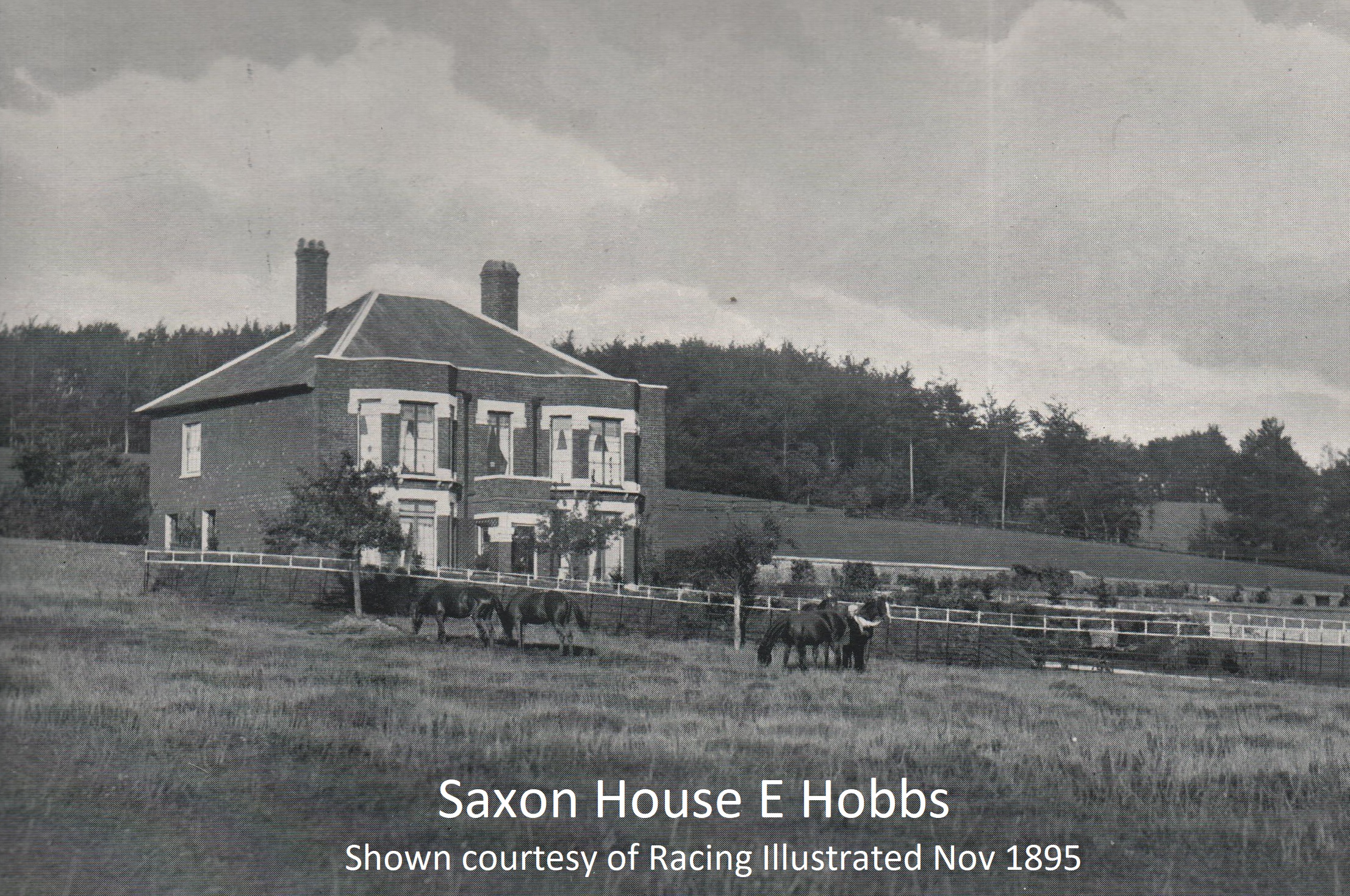
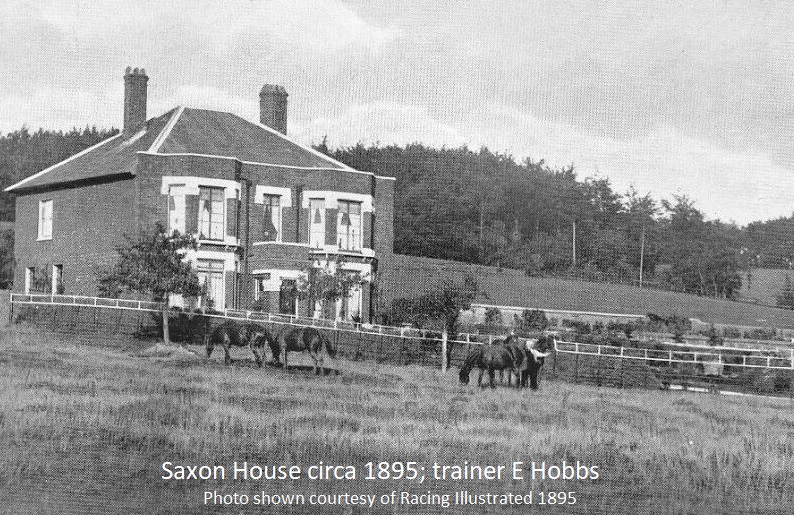
Tuesday 16th February 1875 Bromley Handicap Hurdle JUVENIS (6/4) owned by Captain Hay, trained and ridden by Fred Lynham
Wednesday 17th February 1875 Beckenham Handicap Hurdle at Bromley JUVENIS (5/2 fav) owned by Captain Hay, trained and ridden by Fred Lynham
Thursday 18th February 1875 Newmarket Handicap Hurdle at Cambridge JUVENIS (2/1) owned by Captain Hay, trained and ridden by Fred Lynham
1880 Sunbury Welter Handicap Plate at Kempton ESSAYEZ (5/4 fav0 owned by Lord De Clifford, trained by Fred Lynham and ridden by Fred Archer
1880 Doncaster Welter Plate WINDSOR (100/8) owned by Sir John Astley, trained by Fred Lynham and ridden by Maidment
1881 Lewes Spring Handicap GEORGE MANSFIELD (6/4) owned by P H Cooper, trained by Fred Lynham and ridden by Luke
1881 Chester Cup WINDSOR (100/8) owned by Sir John Astley, trained by Fred Lynham and ridden by Tommy Weston
1900 Ascot Stakes at Royal Ascot BALDUR (4/1) owned by Lord Carnarvon, trained by Fred Lynham and ridden by Tod Sloan
1890-1893 Thomas Lewis (Parrs House)
Thomas Lewis, born in County Down, Ireland in 1854, began training at The Curragh in 1887 for Thomas Gisborne Gordon, winning the 1889 Irish Derby with Tragedy (SR 1965). At the time of winning the Irish Derby one of the stables prominent owners was W W Fulton, a wealthy manufacturer from Belfast, and he invited Thomas Lewis to train for him at Parrs House Stables, Upper Lambourn in 1890. They enjoyed immediate success, winning the 1891 Cambridgeshire with Comedy, and Lewis remained at Parrs House until 1893. He later moved to Druid's Lodge.
1889 Irish Derby at The Curragh TRAGEDY (SR 1965) 3/1 owned by Captain J Henry Greer, trained by Thomas Lewis, nominated as trainer to Thomas Gisborne Gordon, and ridden by Thomas Beasley
1891 Cambridgeshire Handicap at Newmarket COMEDY 7/1 owned by W W Fulton, trained by Thomas Lewis and ridden by J Ibbett
1894 Charles Peck (Parrs House)
Charles Peck, born in 1873, was able to launch his training career at Parrs House, Upper Lambourn in 1894 with just £100 capital and 15 harnesses given to him by his father Robert Peck. A year later he moved to Russley Park and then on to Ogbourne. He served in the British Army during the Boer War, but on his return to England he began training for Solly Joel at Ilsley where he trained Bachelor's Button to win the 1904 Champion Stakes. He was then appointed to take charge of Solly Joel's string at Sefton Lodge, Newmarket. Unfortunately, Charles did not handle his own financial affairs well, and racked up huge gambling debts before applying for bankruptcy in October 1916 with declared debts of £10,837.
Edward John Hobbs, born in 1859, was the brother of Newmarket and Lambourn racehorse trainer Vernell Hobbs. Having previously assisted James Humphreys at Stork House, Edward Hobbs took charge at Saxon House Stables around 1883 and later trained predominantly for E Hobson after he married Hobson's daughter on Saturday 6th June 1885 at the Church of the Sacred Heart in Camberwell.
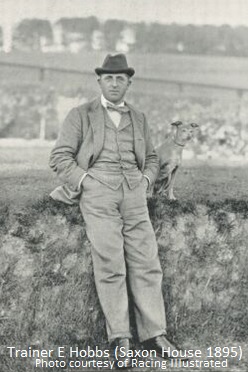
In December 1885 Hobbs received a boost from his father-in-law who moved a number of horses from Robert Sherwood's Newmarket stables to Hobbs at Saxon House. Those horses included Goldstone, Rough Diamond, Hesitation, Oriental Girl and Junlata. Hobbs gained an important success in 1892 with Burnaby in the Cesarewitch, and in 1894 with Indian Queen in the Cambridgeshire. In February 1908 he departed Lambourn bound for Westbury where he continued to train for Lord Fermoy amongst others. When he retired from training he and his wife moved to Minehead where he was keen to support all forms of sport, especially football and local cricket teams. One of his greatest possessions was the set of shoes worn by Burnaby during his successful Cesarewitch race, and he proudly displayed them at his home until late in life, when he passed them to his brother Vic for safe keeping at his Lambourn stables. He died at his home at Stogumber, near Minehead,
1892 Cesarewitch at Newmarket BURNABY (7/1 fav) owned by Mr E Hobson, trained by Edward Hobbs and ridden by J Doyle
1894 Cambridgeshire Handicap at Newmarket INDIAN QUEEN (25/1) owned by Mr E Hobson, trained by Edward Hobbs and ridden by Croft
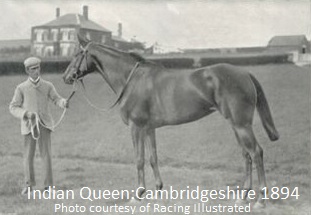
August 1908-December 1908 Stuart Bell
After Edward J Hobbs departed Saxon House stables bound for Westbury, Saxon House was taken over some 6 months later by Stuart Bell, who had moved from his Hednesford Stables, and all seemed to be going well. In November 1908 the Sporting Life reported that a further 8 horses had arrived at the stables to join Bell's string, but by the turn of the year Edward D Gwilt had replaced him. Stuart Bell continued to ride in races, and later in 1909 he had tried to reduce his weight to 9st 12lbs to enable him to ride Mr G A Prentice's Pitsea in the Auteuil Hurdle.
John Francis Hallick, born in 1866, enjoyed all country sports, acting as a judge for 15 years at Lambourn Coursing Club, and initially trained trotters ridden by Cornelius Foy, then upgrading to ponies under the National Pony and Galloway rules, before he launched his training career under rules at Lyddington in 1896 where he trained for Mr Menzies, Mr Clifford Mellor, Mr W J Phelps, owner of a game black mare named Rouge who won numerous races, and Mr C Seton, but he also trained his own horses which ran in his colours of black, cherry hooped sleeves and cherry cap. In 1902 he moved to larger premises at Waltham House, Lambourn from where he sent out Whinbloom to win the Great Metropolitan Handicap at Epsom, the Summer Handicap at Newmarket and the Royal June Handicap at Windsor. Such was the size of his string that he also used Parrs House between 1903 and 1916. His best season was in 1909 when his chief money winner was Lord Villier's Greenback, later winning the valuable Royal Handicap at Windsor. Hallick was unlucky not to win a Classic, as Greenback 100/8 was only beaten a neck by Lemberg (SR 2076) in the 1910 Epsom Derby, but made amends at Royal Ascot when landing the Prince of Wales's Stakes. In 1911 he owned and trained Bannockburn to win 6 races, including the Ascot Biennial Stakes and the Duke of Cambridge Handicap at Newmarket. He was a great supporter of any apprentice who came to his stables, including Fred Templeman, H Robbins, H Watts and E Gardner. In his youthful days he rode as a jockey, which is quite surprising given that he was 6 ft 4ins tall and in later life weighed over 17 st, earning him the nickname 'Big John Hallick'.
In January 1909 Edward Gwilt, born in 1875, transferred from Rugby to Saxon House, bringing with him Milestone, Assam, Guilan, Rose Queen, Quair and Little Garston. He gradually increased the size of his string, although successes were usually in moderate races, but he did land an early season double at Stratford on Monday 26th April 1909 with St Conan (evens fav) and Arizona II (4/5 fav) winning the first two races of the day. Two of his best early owners were J H Charters, of the 8th Hussars, and Alec Law, Master of the Yarmouth Harriers, who both lived in Suffolk, but were keen to support their long-time friend Edward Gwilt, calling themselves the Suffolk Coterie. Particularly successful was Kilsby, owned and ridden by Charters, who won 12 races in the 1909-1910 season, including 7 consecutive victories. In 1920 Parrs House and Stables became part of Saxon House Stables, extending Gwilt's opportunity to enlarge his string. Whilst Gwilt trained mostly over jumps, and even then, mostly in Sellers, he did have some success on the Flat. In 1927 Orbindos was beaten just a head by J B Joel's Priory Park in the Lincoln Handicap before going on to score at Newbury in the Newbury Spring Cup in April 1927, with Bacchanale completing a rare double for Gwilt on the same card in the Thatcham Long Distance Handicap.
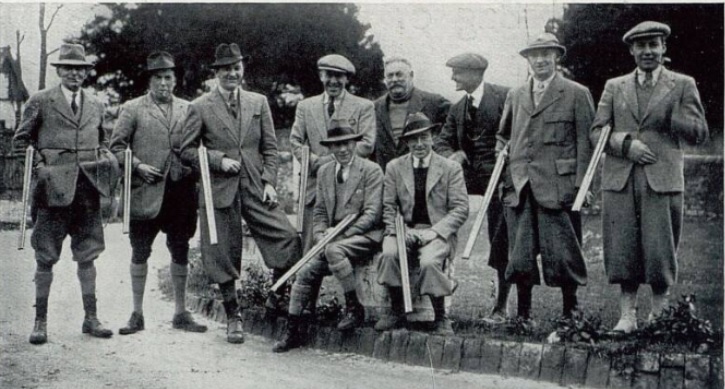
Gwilt gained a reputation for not treating his staff well, notably Jack Dowdeswell who joined the stable in 1930., and was paid just 2 shillings a week, working a 14-hour day which began at 5.30am with mucking out. He helped with the feed until lunchtime, was expected to do gardening in the yard, and even towards the end of the working day he had to go and fetch Gwilt's evening newspaper. He once requested that his indenture could be transferred to the more considerate Newmarket trainer Walter Nightingall, but Gwilt replied 'definitely not'. Dowdeswell got his own back when he had completed his 5-year apprenticeship and Dowdeswell offered him a small pay rise, saying I guess that you will be staying on, to which Dowdeswell replied, 'definitely not.' Jack Dowdeswell went on to become an accomplished jockey, winning the Cheltenham Grand Annual, the Imperial Cup, the Grand Sefton Chase and Queen Elizabeth Chase. Gwilt, on the other hand, continued to train well into the Second World War, but had limited success. However, he did win the 1937 Champion Hurdle with Free Fare, who also went on to leave Golden Miller in his wake when winning the Arthur Coventry Flat race at Sandown Park, and Gwilt also won many good steeplechases with Gerald L, although by the time it won the Scottish Grand National in 1925 it was trained by Ivor Anthony. Gwilt died in December 1946 aged 71.
1923 Prince of Wales Steeplechase at Sandown GERALD L 13/8 fav owned by major Scott Murray, trained by Ted Gwilt and ridden by Ian Morgan
1927 Thatcham Long Distance Handicap at Newbury BACCHANALE 7/1 owned and trained by Ted Gwilt and ridden by A Burns
1927 Newbury Spring Cup ORBINDOS 4/1 owned by Mr B Coulson, trained by Ted Gwilt and ridden by A Burns
1933 Liverpool Hurdle at Aintree FREE FARE 7/1 owned by Ben Warner, trained by Ted Gwilt and ridden by Georges Pellerin
1935 Arthur Coventry National Hunt Flat Race at Sandown FREE FARE 2/7 fav owned by Ben Warner, trained by Ted Gwilt and ridden by Captain R Harding, with Golden Miller back in third
1937 Champion Hurdle at the Cheltenham Festival FREE FARE 2/1 fav owned by Ben Warner, trained by Ted Gwilt and ridden by Georges Pellerin
1938 Weyhill Handicap Hurdle at Newbury FREE FARE 100/8 owned by Ben Warner, trained by Ted Gwilt and ridden by Bruce Hobbs
Fulke Thomas Tyndall Walwyn, son of Colonel Fulke Walwyn, an officer in the Royal Welch Fusiliers and Master of the Monmouth Hounds, was born in Wrexham on 8th November 1910 alongside his twin sister Helen, and was the cousin of Derby winning Lambourn trainer Peter Walwyn. He was initially educated at Malvern College before joining the Royal Military College at Sandhurst, and after completing his military training he became an Officer in the 9th Lancers, although he resigned his commission in 1935. He was a successful amateur jockey, winning the Amateur Riders championship twice in the 5 seasons he rode as an amateur, experiencing his first ride in the Aintree Grand National in 1934, but fell at the 13th fence on Ready Cash (20/1). Although he did not have a mount the next year, in 1936 he partnered the Major Noel Furlong owned and trained Reynoldstown (10/1) to an easy 12 length victory. It was an amazing victory, on a horse which had won the previous years National, because he lost his whip early in the race, and lost a stirrup on the second circuit. Later that year, in October 1936, he partnered the 5-times Gold Cup winner Golden Miller (1/3 fav) at Wincanton when the horse won the Lattiford Optional Selling Chase. Less than a month later Walwyn rode Golden Miller over the National fences in the Beecher Chase where he was made the 7/2 joint fav, but could only manage second, beaten 2 lengths by his fellow joint favourite Royal Mail. Fulke turned professional in 1937, joining the stables of George Beeby, but did not get a ride in the Grand National for the next 2 years, although surprisingly, he was back in 1939 aboard Dunhill Castle (28/1) but fell at the 3rd fence. In April 1939 his riding career came to an abrupt end at Ludlow when his horse fell and he fractured his skull, leaving him unconscious for a month and having a metal plate in his head, but it did mean that he could launch his training career, buying Delamere House Stables in Lambourn, training 18 winners in his first season. He married his first wife Diana, daughter of Major Carlos Clarke and a cousin of the Earl of Ranfurly, an accomplished horsewoman and a major asset around the Stables. He returned to active service at the outbreak of the War, serving with the 9th Lancers in France, although his skull injuries could have given him an exemption.
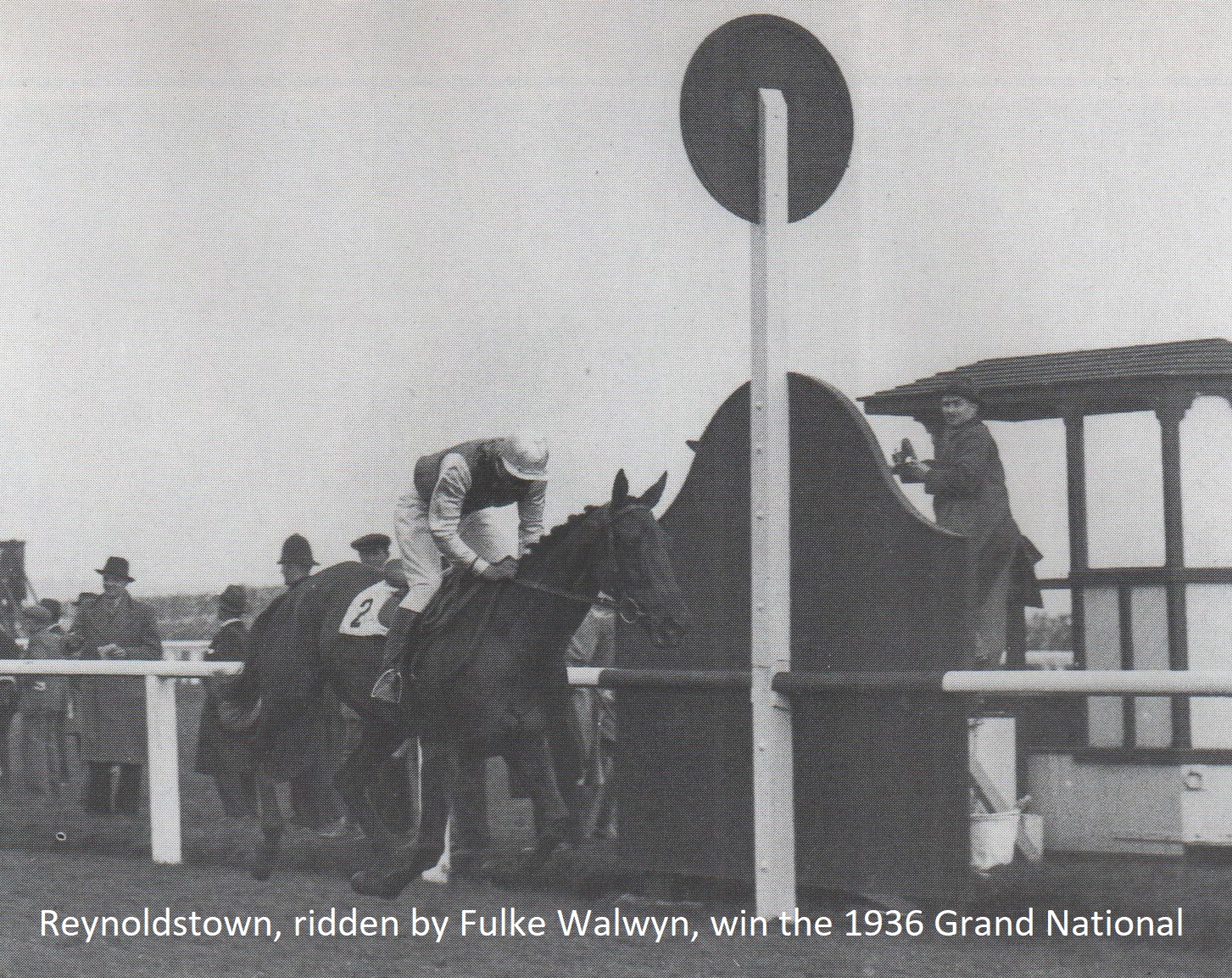
In the latter stages of the War he purchased Saxon House Stables in 1944, replacing Edward Gwilt. Throughout the next 47 years he showed himself to be one of the top National Hunt trainers of all time, landing 4 Cheltenham Gold Cups, most famously in 1963 with Mill House who then had an epic battle with the mighty Arkle the next year before succumbing to that champion, 2 Champion Hurdles, including 50/1 outsider Kirriemuir in 1965, 7 Hennessy Gold Cups and the same number of Whitbread Gold Cups, and in 1964 became one of an elite group who have ridden and then trained a Grand National winner, when Team Spirit won the great race to pair with Reynoldstown, which Walwyn had ridden to victory in 1936. In 1947 he won the first Scottish Grand National at Bogside to be held after the War, when Rowland Roy, ridden by Mr R Black, triumphed, repeating the success again 17 years later with Popham Down. Tragically, his first wife Diana died, aged 32, on Thursday 29th December 1949 in Newbury District Hospital having been taken there on Boxing Day, Monday 26th December. Two days later an inquest confirmed that her death was caused by the accidental taking of a number of pain killers, which she was accustomed to take on a regular basis after suffering pain from a parachute jump which she had experienced some years before. In June 1952 he married his second wife, Cath, daughter of the horse racing fan and amateur rider Sir Humphrey de Trafford, and the marriage was blessed with a daughter, Jane, om 29th November 1957, the couple going on to enjoy 39 years of married life. When the Hennessy Gold Cup was launched at Cheltenham in 1957, staged thereafter at Newbury, Fulke Walwyn dominated the first two running's, winning the inaugural race with Mandarin, ridden by Gerry Madden, and following up the next year with Taxidermist 10/1 ridden by John Lawrence, later Lord Oaksey, although Mandarin went off the 10/11 favourite to repeat his victory of the previous year. In 1963 Mill House scored a famous victory in the Hennessy Gold Cup, beating Arkle into third place. Walwyn was champion National Hunt Trainer on 5 occasions, but did venture into flat racing occasionally, winning the 1950 Queen Alexandra Stakes at Royal Ascot with Aldborough, owned by Dorothy Paget and ridden by Gordon Richards, and the 1950 Doncaster Cup with the same horse when partnered by Doug Smith. In total he trained 40 Cheltenham Festival winners, a record which stood until beaten by fellow Lambourn trainer Nicky Henderson in 2012, and Fulke's achievement is rightly marked by a race which is named after him, the Fulke Walwyn Kim Muir Challenge Cup. He trained for the great and good, the eccentric, Dorothy Paget, and Royalty, Queen Elizabeth the Queen Mother from 1973. Ten years after he began training for the Queen Mother, he was made Commander of the Royal Victorian Order. He retired in 1990 at the age of 79, suffering from Parkinson's Disease, and his wife Cath took over the training license about a year before he died peacefully at Saxon House on 18th February 1991.
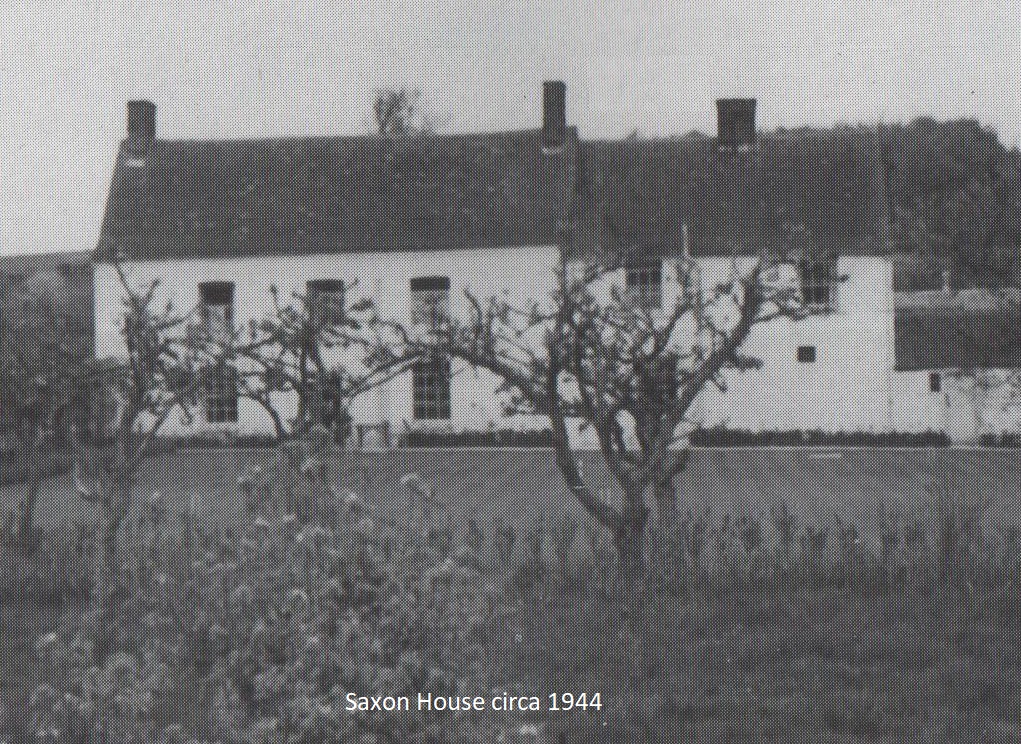
Principal winners at Saxon House Stables 1944-1969
1947 Scottish Grand National at Bogside ROWLAND ROY 6/1 owned by Mr A G Boley, trained by Fulke Walwyn and ridden by Mr R Black
1947 King George VI Chase at Kempton Park ROWLAND ROY 5/1 owned by Mr A G Boley, trained by Fulke Walwyn and ridden by Mr R Black
1949 Imperial Cup at Sandown Park SECRET SERVICE 20/1 owned by R Sweeny, former American Golf Champion, trained by Fulke Walwyn and ridden by Johnny Gilbert
1950 Imperial Cup at Sandown Park SECRET SERVICE 100/8 owned by R Sweeny, trained by Fulke Walwyn and ridden by T Cusack
1950 Queen Alexandra Stakes ALDBOROUGH 2/1 owned by Miss Dorothy Paget, trained by Fulke Walwyn and ridden by Gordon Richards
1950 Doncaster Cup ALDBOROUGH 6/1 owned by Miss Dorothy Paget, trained by Fulke Walwyn and ridden by Doug Smith
1952 Cheltenham Gold Cup MONT TREMBLANT 8/1 owned by Miss Dorothy Paget, trained by Fulke Walwyn and ridden by Dave Dick
1954 Cotswold Chase, later the Arkle Challenge Trophy, at the Cheltenham Festival ARMORIAL III 7/2 fav trained by Fulke Walwyn and ridden by Rene Emery
1955 Cotswold Chase, later the Arkle Challenge Trophy, at the Cheltenham Festival MANUSCRIPT 10/1 owned by Mme K Hennessy, trained by Fulke Walwyn and ridden by Johnny Bullock
1957 Triumph Hurdle at Hurst Park SQUARE DANCE 13/2 trained by Fulke Walwyn and ridden by Michael Scudamore
1957 Hennessy Gold Cup at Cheltenham MANDARIN 8/1 owned by Peggy Hennessy, trained by Fulke Walwyn and ridden by Gerry Madden
1957 King George VI Chase at Kempton Park MANDARIN 7/1 owned by Peggy Hennessy, trained by Fulke Walwyn and ridden by Gerry Madden
1958 Hennessy Gold Cup at Newbury TAXIDERMIST 10/1 owned by Mrs Peter Hastings, trained by Fulke Walwyn and ridden by John Lawrence, later Lord Oaksey
1958 Whitbread Gold Cup at Sandown TAXIDERMIST 100/6 owned by Mrs Peter Hastings, trained by Fulke Walwyn and ridden by John Lawrence, later Lord Oaksey
1959 King George VI Chase at Kempton Park MANDARIN 5/2 fav owned by Peggy Hennessy, trained by Fulke Walwyn and ridden by Gerry Madden
1961 Hennessy Gold Cup at Newbury MANDARIN 7/1 owned by Peggy Hennessy, trained by Fulke Walwyn and ridden by Willie Robinson
1962 Champion Hurdle ANZIO 11/2 owned by Sir Thomas Ainsworth, trained by Fulke Walwyn and ridden by Willie Robinson
1962 Cheltenham Gold Cup MANDARIN 7/2 owned by Peggy Hennessy, trained by Fulke Walwyn and ridden by Fred Winter
1963 Cheltenham Gold Cup MILL HOUSE 7/2 owned by Bill Gollings, trained by Fulke Walwyn and ridden by Willie Robinson
1963 Hennessy Gold Cup at Newbury MILL HOUSE 15/8 fav owned by Bill Gollings, trained by Fulke Walwyn and ridden by Willie Robinson
1963 King George VI Chase at Kempton Park MILL HOUSE 2/7 fav owned by Bill Gollings, trained by Fulke Walwyn and ridden by Willie Robinson
1964 Grand National at Aintree TEAM SPIRIT 18/1 owned by John K Goodman, trained by Fulke Walwyn and ridden by Willie Robinson
1964 Scottish Grand National at Bogside POPHAM DOWN 8/1 owned by Mrs Charles Turriff, trained by Fulke Walwyn and ridden by Johnny Haine
1965 Champion Hurdle KIRRIEMUIR 50/1 owned by Dorothy Beddington, trained by Fulke Walwyn and ridden by Willie Robinson
1967 Whitbread Gold Cup at Sandown MILL HOUSE 9/2 fav owned by Bill Gollings, trained by Fulke Walwyn and ridden by David Nicholson
1968 Hennessy Gold Cup at Newbury MAN OF THE WEST 20/1 owned by Donovan Drewery, trained by Fulke Walwyn and ridden by Willie Robinson
1968 Massey-Ferguson Gold Cup at Cheltenham TASSILO 8/1 owned by Jack Joseph, trained by Fulke Walwyn and ridden by Aly Branford
1969 Scottish Champion Hurdle at Ayr MUGATPURA 9/2 owned by Doctor C D Desal, trained by Fulke Walwyn and ridden by Tom Jennings
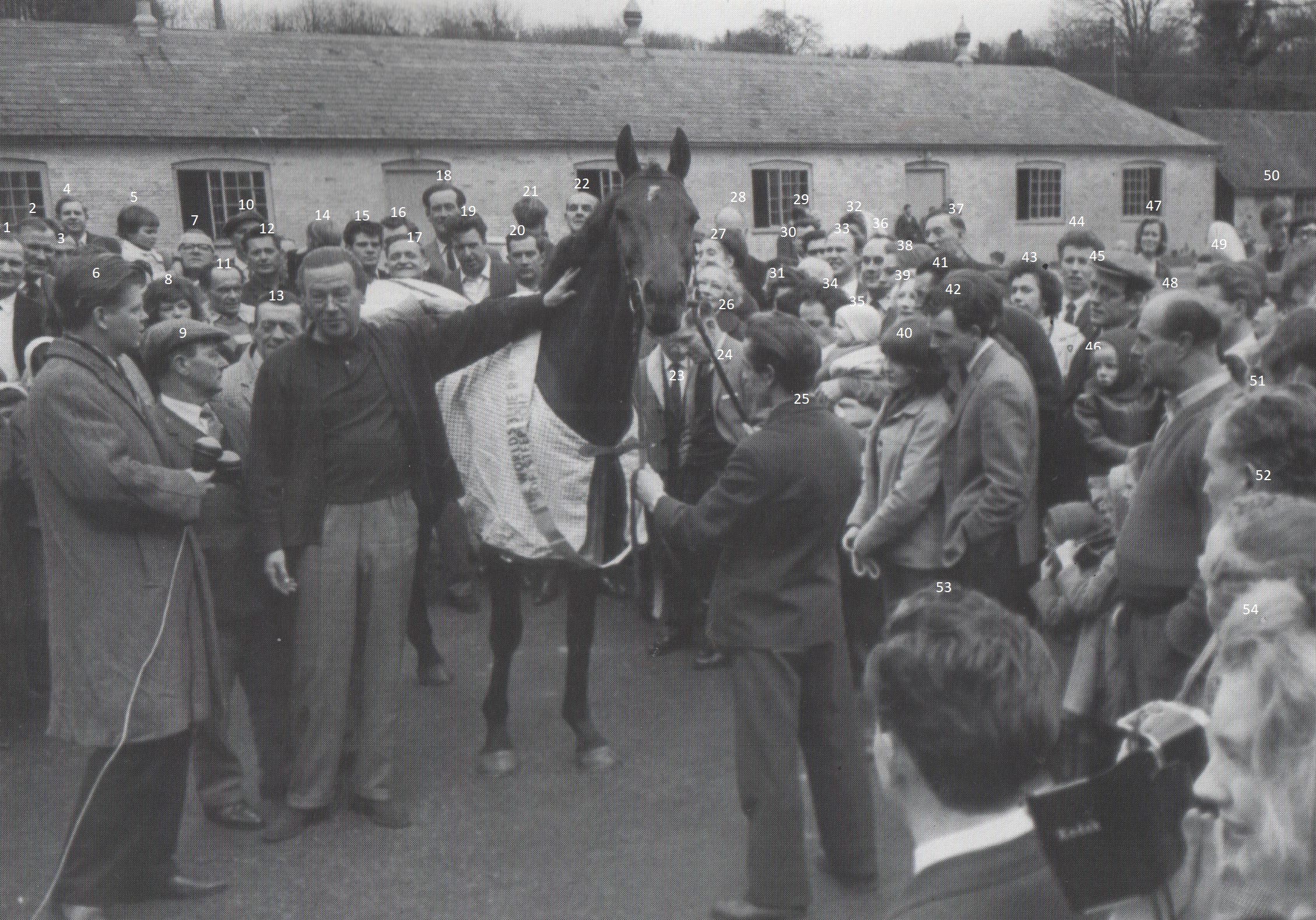
Principal winners at Saxon House Stables 1970-1990
1971 King George VI Chase at Kempton Park THE DIKLER 11/2 owned by Peggy August, trained by Fulke Walwyn and ridden by Barry Brogan
1972 Hennessy Gold Cup at Newbury CHARLIE POTHEEN 10/1 owned by Mrs B Heath, trained by Fulke Walwyn and ridden by Richard Pitman
1973 Cheltenham Gold Cup THE DIKLER 9/1 owned by Peggy August, trained by Fulke Walwyn and ridden by Ron Barry
1973 Whitbread Gold Cup at Sandown CHARLIE POTHEEN 11/4 fav owned by Mrs B Heath, trained by Fulke Walwyn and ridden by Richard Pitman
1974 Whitbread Gold Cup at Sandown THE DIKLER 5/1 owned by Peggy August, trained by Fulke Walwyn and ridden by Ron Barry, winning after a Steward's Inquiry, finishing second to Proud Tarquin, but the places were reversed
1974 Grand Military Gold Cup at Sandown Park PAKIE 1/3 fav owned by A Bowles, trained by Fulke Walwyn and ridden by Major Andrew Parker Bowles
1977 Grand Military Gold Cup at Sandown Park DOUBLE BRIDAL 4/1 owned by C Price, trained by Fulke Walwyn and ridden by Captain C Price
1979 Whitbread Gold Cup at Sandown DIAMOND EDGE 7/1 jt fav owned by S Loughridge, trained by Fulke Walwyn and ridden by Bill Smith
1981 Whitbread Gold Cup at Sandown DIAMOND EDGE 5/1 fav owned by S Loughridge, trained by Fulke Walwyn and ridden by Bill Smith
1981 Hennessy Gold Cup at Newbury DIAMOND EDGE 9/2 fav owned by S Loughridge, trained by Fulke Walwyn and ridden by Bill Smith
1982 Scottish Champion Hurdle at Ayr GAY GEORGE 4/6 fav owned by the Duke of Devonshire, trained by Fulke Walwyn and ridden by Bill Smith
1983 Imperial Cup at Sandown Park DESERT HERO 20/1 owned by Mrs Cath Walwyn, trained by Fulke Walwyn and ridden by Roger Chapman
1984 Whitbread Gold Cup at Sandown SPECIAL CARGO 8/1 owned by HM Queen Elizabeth the Queen Mother, trained by Fulke Walwyn and ridden by Kevin Mooney
1984 Grand Military Gold Cup at Sandown Park SPECIAL CARGO 16/1 owned by the Queen Mother, trained by Fulke Walwyn and ridden by Gerald Oxley
1985 Grand Military Gold Cup at Sandown Park SPECIAL CARGO 11/10 fav owned by the Queen Mother, trained by Fulke Walwyn and ridden by Gerald Oxley
1986 Grand Military Gold Cup at Sandown Park SPECIAL CARGO Evens fav owned by the Queen Mother, trained by Fulke Walwyn and ridden by Gerald Oxley
1988 Grand Military Gold Cup at Sandown Park COLUMBUS (NZ) 50/1 owned by Captain C Lane, trained by Fulke Walwyn and ridden by Captain C Lane
1990 Grand Military Gold Cup at Sandown Park THE ARGONAUT (NZ) 5/2 owned by Queen Mother, trained by Fulke Walwyn and ridden by Gerald Oxley
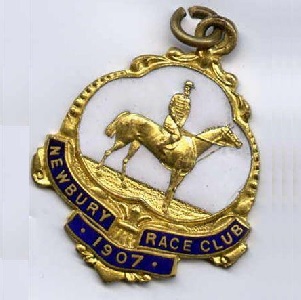
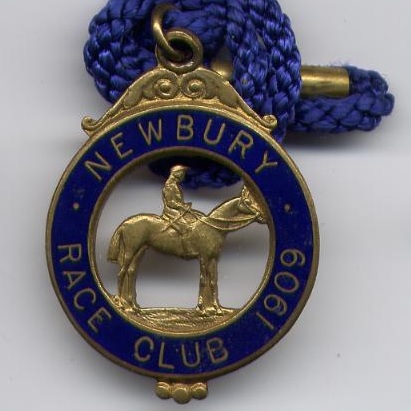
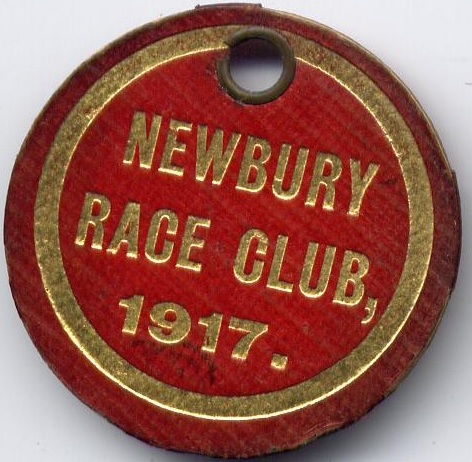
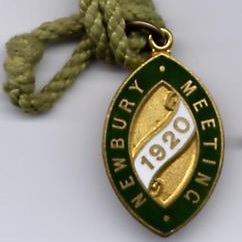
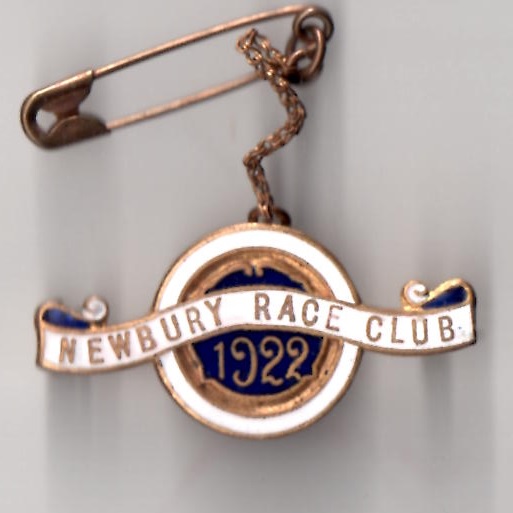
1990-May 1993 Cath Walwyn
After the legendary Fulke Walwyn retired in 1990, aged 79, he continued to reside at Saxon House, although the training license was taken over by his second wife Cath. Unfortunately, Fulke died in February 1991, and the number of horses at the yard began to drop, but Cath continued to train there for a further 2 seasons, ably assisted by Gerald Oxley in 1991 and 1992, who had ridden so many Grand Military Gold Cup winners for her late husband. Her first victory in 1992 was Furry Knowle at Devon and Exeter, owned by the Queen Mother, carrying on a long-held tradition of Royal winners being sent out from Saxon House Stables. She began her final season with 16 horses, most successful of which was Cardinal Red, who won at Aintree and was runner-up at the Cheltenham Festival in the Grade 1 Sun Alliance Novices Hurdle at 150/1, beaten by the Nigel-Twiston-Davies trained Gaelstrom. Cardinal Red got his revenge over Gaelstrom a few weeks later at Aintree in the Sefton Novices Hurdle, winning by a length and a half at 4/1. Cardinal Red brought his season, and the training career of Cath Walwyn, to an end in the Dean Moor Long Distance Hurdle at Haydock Park, finishing a creditable second, beaten three and a half lengths by Boscean Chieftain. In early May 1993 she announced that she would be handing back her license at the end of the season, but would continue to live at Saxon House and would rent the yard out to interested parties. Expected to be first in the queue was Ben de Haan, who had ridden successfully for 14 years, and who had assisted Cath in her final season. However, Cath offered Simon Christian, who had assisted Fulke for 6 years at Saxon House before training in his own right at Kinnersley, the chance to take over at Saxon House but Christian rejected the offer to return to Lambourn.
1992 David Garrett Memorial Novices Chase at Devon & Exeter FURRY KNOWLE 11/4 owned by Queen Mother, trained by Cath Walwyn and ridden by Ben de Haan
1992 Inkberrow Hurdle at Worcester CARDINAL RED 14/1 owned by J M Turner, trained by Cath Walwyn and ridden by Ben de Haan
1993 Sefton Novices Hurdle at Aintree CARDINAL RED 4/1 owned by J M Turner, trained by Cath Walwyn and ridden by Ben de Haan
January 1994-1995 Brian Meehan
Brian Joseph Meehan, born in Limerick on 16th July 1967, served as assistant trainer to Richard Hannon senior before launching his own training career in 1993. He was initially based at Folly House Stables, Lambourn, and enjoyed 14 winners in his first seaon. At the end of that season he realised that his stables limited his opportunity to expand and build on his growing reputation, as it could only stable 26 horses, so in January 1994 he approached Cath Walwyn to ask to lease the empty Saxon House Stables, conveniently located just 250 yards away. Meehan moved to Newlands Stables in 1995 and was replaced by Mark Pitman in 1997.
1997-30th June 1999 Mark Pitman
Mark Pitman began training in part of Saxon House stables in 1997, landing his first winner, Sailin Minstrel, at Worcester. On 1st July 1999 he took over Weathercock House Stables after his mother, Jenny, announced her retirement.
1999-2002 Noel Chance
Noel Chance, born in Dublin, Ireland on 18th December 1951, was educated at St Patrick's High School, Downpatrick, and freely admits that school was a low priority in his thoughts, with racing set on a much higher plane. He inherited his love of racing from his father, a Head Lad who died when Noel was just 2-years of age. Noel launched his training career near The Curragh, in his native Ireland, in 1974, after working for Sir Hugh Nugent at The Curragh from 1967 and then gaining further experience in Neville Begg's Sydney yard in Australia in 1971, but he was much more successful when he was enticed by owner Michael Worcester to transferred to Folly House Stables in Upper Lambourn in 1995. The next year he won the Towton Novices Chase at Wetherby with Mr Mulligan, who then followed up in the Reynoldstown Novices Chase at Ascot. He further repaid Worcester's faith in him by winning the 1997 Cheltenham Gold Cup with Mr Mulligan at 20/1 a year later. In 1999, when Mark Pitman decided to move across to Weathercock House after his mother announced her retirement, Noel Chance was able to move firstly to King's Farm on a temporary basis before going to the historic Saxon House Stables, announcing himself as a public trainer, landing the Sun Alliance Chase with another of his stars Looks Like Trouble, but even Chance would have thought it long odds against winning a second Gold Cup with the horse just 12 months later. Nevertheless, Looks Like Trouble won the 2000 Gold Cup at 9/2 for owner Tim Collins when ridden by Richard Johnson, following up in the John Bull Chase at Wincanton in 2001. Also, in 2000 Chance landed the prestigious Tingle Creek Chase with Flagship Uberalles, the race being moved to Cheltenham that year. Flagship Uberalles had already won the 1999 Tingle Creek trained by Paul Nicholls, but Chance took him on in 2000 to win that year's running, although the horse was less successful in the other 3 races he ran whilst at Saxon House. In 2002 Chance moved to Berkeley House in Lambourn where the best horse he trained was Murphy's Cardinal, remarkably unbeaten at 8-years-old. Saxon House was purchased by Charles Egerton and Mark Usher became trainer at the historic stables. Noel Chance then gave up training for a while when it became financially unviable, but did return to the training ranks when based at Upshire House Stables before finally retiring in 2013.
1996 Towton Novices Chase at Wetherby MR MULLIGAN 3/1 owned by Michael Worcester, trained by Noel Chance and ridden by Richard Johnson
1996 Reynoldstown Novices Chase at Ascot MR MULLIGAN 9/4 fav owned by Michael Worcester, trained by Noel Chance and ridden by Richard Johnson
1997 Cheltenham Gold Cup MR MULLIGAN 20/1 owned by Michael Worcester, trained by Noel Chance and ridden by Tony McCoy
1999 Sun Alliance Chase at the Cheltenham Festival LOOKS LIKE TROUBLE 16/1 owned by Universal Conference & Incentive TRV, trained by Noel Chance and ridden by Paul Carberry
2000 Pillar Property Chase at Cheltenham LOOKS LIKE TROUBLE 100/30 owned by Tim Collins, trained by Noel Chance and ridden by Norman Williamson
2000 Cheltenham Gold Cup LOOKS LIKE TROUBLE 9/2 owned by Tim Collins, trained by Noel Chance and ridden by Richard Johnson
2000 Tingle Creek Chase at Cheltenham FLAGSHIP UBERALLES 3/1 fav owned by E Gutner and M Krysztofiak Racing, trained by Noel Chance and ridden by Richard Johnson
2000 James Nicholson Wine Merchant Champion Chase at Down Royal LOOKS LIKE TROUBLE 5/4 jt fav owned by Tim Collins, trained by Noel Chance and ridden by Richard Johnson
2001 John Bull Chase at Wincanton LOOKS LIKE TROUBLE Evens fav owned by Tim Collins, trained by Noel Chance and ridden by Seamus Durack
2002-December 2015 Mark Usher
Mark Usher was destined for a career in racing as soon as he witnessed Music Boy win the 1975 Gimcrack Stakes at York, and once he had completed his compulsory education he joined Barry Hill's South Bank Stables in Lambourn, leaving after a year to travel to racing's headquarters in Newmarket where he worked for Robert Armstrong at St Gatien Stables. Just a year later the lure of Lambourn was too great and Mark joined Henry Candy's stable where he gained invaluable experience from Henry Candy before he launched his own training career at Felstead Court Stables on the Folly Road in Lambourn in mid-1983, hitting lucky in his first few months by receiving the horses from Tom Marshall who had given up training. He received a boost in August 1983 when Mystery Ship, owned by Mrs M Simpson, won the Sweet Solera Stakes at Newmarket at 25/1 partnered by George Duffield. A racing syndicate, headed up by Tom Marshall, owned Portogon who won the 1985 Jubilee Handicap at Kempton Park. In September 1989, after 6 years at Felstead Court, Usher announced he was moving to the neighbouring village of East Garston to take over Gay Kelleway's old yard. In 1993 he won the Flying Childers Stakes at Doncaster with Imperial Baliwick ridden by Martin Dwyer. By 2002 he had transferred to Saxon House Stables, leasing them from Charles Edgerton who had purchased the complex, and replacing dual Gold Cup winning trainer Noel Chance. He enjoyed Listed race success with Alchemist in the Sportsmen's Fillies Stakes at Kempton. In 2013 the stable star was Miracle of Medina which won the Listed Rose Bowl Stakes at Newbury at the rewarding odds of 33/1, following up in the Group 3 Somerville Tattersalls Stakes at Newmarket, rewarding backers at 25/1. On New Year's Day 2016 he moved to Rowdown Stables, a compact 30-box stable within a mile of Saxon House Stables.
1983 Sweet Solera Stakes at Newmarket MYSTERY SHIP 25/1 owned by Mrs M Simpson, trained by Mark Usher and ridden by George Duffield
1984 Tia Maria Handicap at Ayr PORTOGON 4/1 jt fav owned by Marshall Racing Syndicate, trained by Mark Usher and ridden by Denis McKay
1985 Jubilee Handicap at Kempton PORTOGON 14/1 owned by Marshall Racing Syndicate, trained by Mark Usher and ridden by Tony McGlone
1993 Flying Childers Stakes at Doncaster IMPERIAL BALIWICK 12/1 owned by Dr Ian Shenkin, trained by Mark Usher and ridden by John Williams
2006 Sportsmen's Fillies Stakes (Listed) at Kempton Park ALCHEMIST 9/2 trained by Mark Usher and ridden by Martin Dwyer
2013 Rose Bowl Stakes (Listed) at Newbury MIRACLE OF MEDINAH 33/1 owned by The High Jinks Partnership, trained by Mark Usher and ridden by Liam Keniry
2013 Somerville Tattersalls Stakes (Group 3) at Newmarket MIRACLE OF MEDINAH 25/1 owned by The High Jinks Partnership, trained by Mark Usher and ridden by Liam Keniry
January 2016 -2018 Sam Thomas
Sam Thomas, most famous for partnering the mighty Denman to success in the 2006 Berkshire Chase, the 2007 Hennessy Gold Cup at Newbury, and the 2008 Cheltenham Gold Cup, successfully applied for his trainer's licence in late 2015 and became a tenant trainer at Saxon House Stables in January 2016. By 2018 he had been lured away from Lambourn by Dai Walters, owner of Ffos Las racecourse, to train for him at his 35-box stables, The Hollies, at Lisvane on the fringes of Cardiff.
MILL HOUSE (1963 Gold Cup, Hennessy Gold Cup, King George VI Chase)
MANDARIN (1962 Gold Cup, 1961 Hennessy Gold Cup, 1959 King George VI Chase)
BROWN DUCHESS (1861 Epsom Oaks, Yorkshire Oaks, 1860 New Stakes at Royal Ascot)
SUNBEAM (1858 St Leger, Coronation Stakes)
LOOKS LIKE TROUBLE (2000 Gold Cup, 1999 Sun Alliance Chase, 2001 John Bull Chase)



